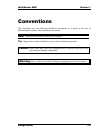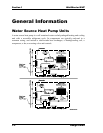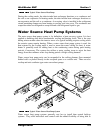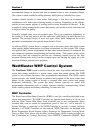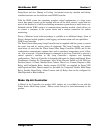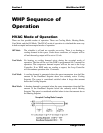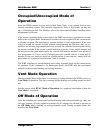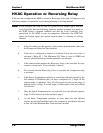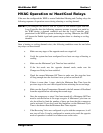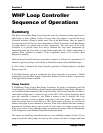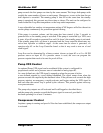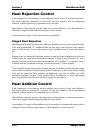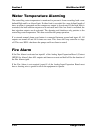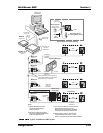
WattMaster WHP Section 1
Design Guide 1-9
HVAC Operation w/ Heat/Cool Relays
If the user has configured the WHP to control Individual Heating and Cooling relays the
following sequence of operation occurs during a heating or cooling demand.
NOTE: If you configure the WHP to look for a proof of flow Enable signal from the
Loop Controller then the following sequence assumes a request was made by
the WHP during a demand condition and that the Loop Controller gave
permission for the WHP to operate its heating or cooling. Otherwise, the WHP
will ignore the Enable signal and operate anytime there is a heating or cooling
demand.
Once a heating or cooling demand exists, the following conditions must be met before
any relays can be activated:
a. Make sure any stages of the opposite mode are staged off.
b. Verify the system has been configured for at least one stage of heating or
cooling.
c. Make sure the Minimum Cycle Time has been satisfied.
d. If the last mode was the opposite demand mode, make sure the
Changeover Delay has been satisfied.
e. Check the current Minimum Off Timer to make sure this stage has been
off long enough since the last time it was cycled on and back off.
f. If there is more than 1 stage, check the Minimum Run Time from the
previous stage to be sure it has elapsed before activating the second stage.
g. Make sure the Space Temperature Demand is the full amount of Deadband
from the setpoint before activating the second stage.
h. Once the compressor or stage 2 has been turned off, a Minimum Off Time
must be satisfied before it can stage on again. A Minimum Cycle time can
also be utilized to limit the number of times per hour that the compressor
can be activated. If you don’t need this limitation, set the Minimum Cycle
Time to be shorter than the Minimum Run Time setpoint.
i. If the Reversing Valve was configured to cycle with the compressor, it will
now turn off also. It can be configured to remain active until the opposite
mode of operation is called for to reduce wear on the valve.



